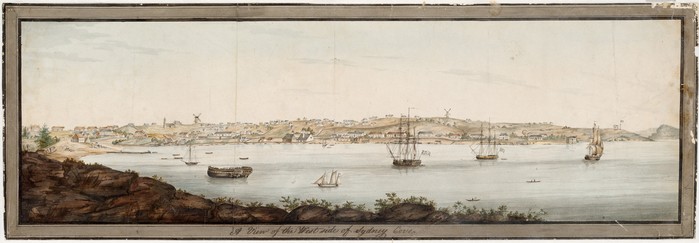
A view of the west side of Sydney Cove
c1804
Watercolour on paper
Donated by Sir William Dixson, 1930
DG V1/86
Watercolour on paper
Donated by Sir William Dixson, 1930
DG V1/86
Like many images from this period, this painting is very much about the nuts and bolts of colonial buildings. It is more concerned with carefully recording the progress of the settlement than with trying to present an artistic view of the town. That buildings like churches had been built in Sydney was an important indicator of the presence of Christian influences in the penal settlement.
Also like many images of Sydney Cove from this time, the foreground includes a trace or isolated reference to the local Indigenous people – in this case a canoe (bottom right). Although their presence is literally marginalised, such references are graphic reminders that Aboriginal people continued to occupy, and live in, the Sydney district long after its colonisation by the British.
The painting once belonged to the family of the first Viscount Sydney, after whom the settlement of Sydney was named. Painted shortly after the viscount's death, it was possibly given to his only son John, and remained in the family's possession until it was purchased by Sir William Dixson.


 Back to list
Back to list